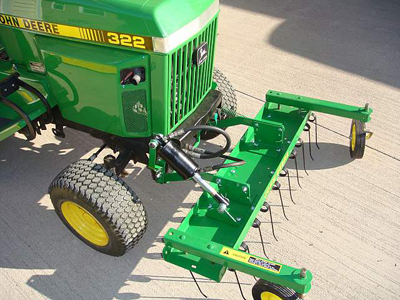Our Friends at 146 Supply Center in Millbury Mass were kind enough to clue us in on what we need to do for that annual spring time lawn care.
We were informed that as soon as the ground dries up a little you need to determine if your lawn needs dethatched, essentially removing the dead grass from your lawn.
There are typically two ways to dethatch your lawn:
1. Manually with a leaf rake, garden rake, or thatching rake.
2. with a Power Dethatcher (vertical cutter shown in the image).
Smaller to medium sized lawns can be manually dethatched, assuming that you have the time.
If you don’t own the power equipment you can rent from local shops or hire a company to do this for you.
Once you are finished, be sure to remove all thatch and debris from your lawn. Unlike aerating, dethatching is almost strictly for the removal of thatch and debris. Removal can usually be done with a simple leaf rake.
Once your lawn is dethatched, it is usually a great time to fertilize your lawn and/or reseed it. Remember, the greater the cut into the soil and thatch removal, the greater the soil exposure, especially to the grass roots. If you decide to reseed, follow-up by ranking the suspended seeds into the soil, add fertilizer, and apply a light covering of matter and/or sand. Additionally, it is a good idea to give your lawn extra watering after dethatching, especially during times of high heat and droughts.
A final note: Dethatching is NOT a pretty process. It is analogist to the old saying, “Out of chaos comes harmony.” The deeper the blades cut into your lawn, the more stress, and hence, the greater the recovery time for your lawn. In short, your lawn can look pretty bad after a deep power thatching. But remember, if you dethatch just prior to the grass’s prime growing season, then it should recover rather quickly and you will soon be enjoying a beautiful full plush green lawn, now doesn’t that sound perfect after this crazy ass winter we just had?
